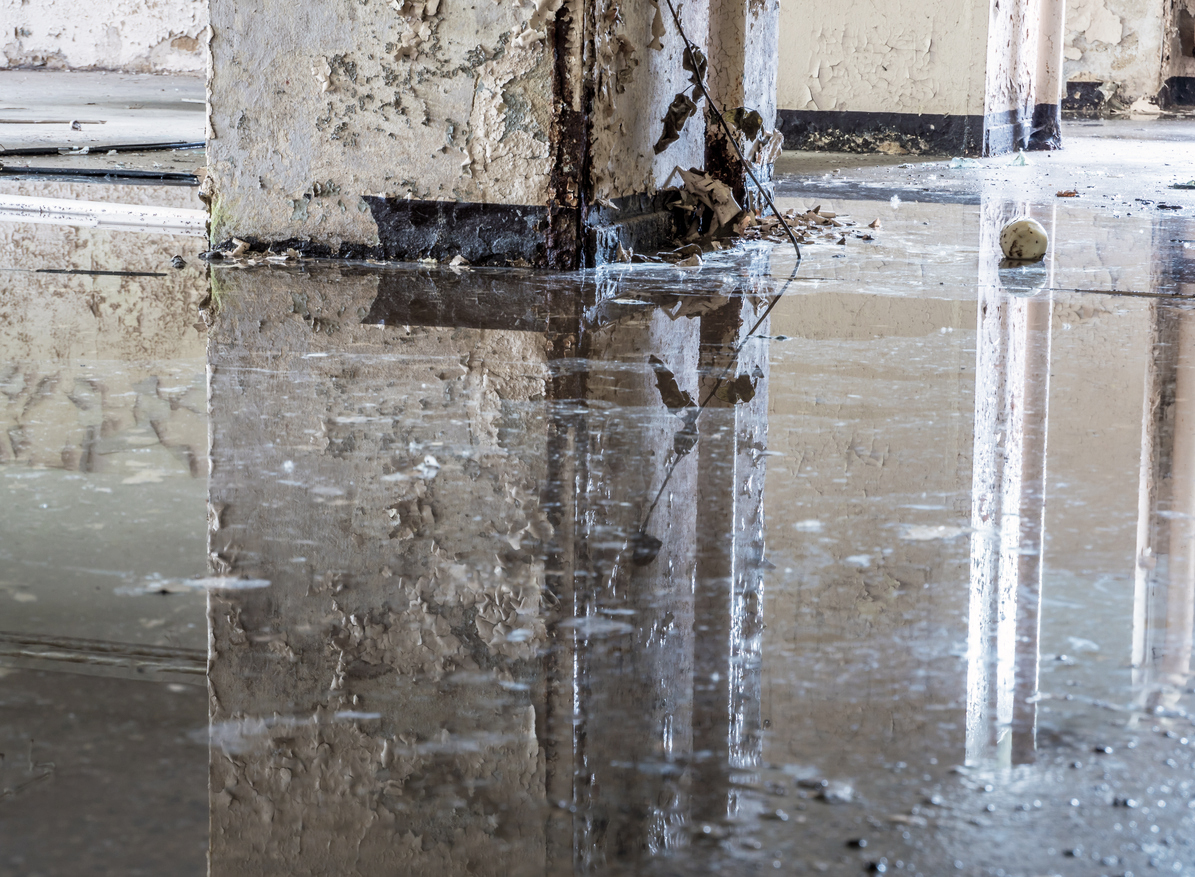Assets can be sustainably protected where cables and pipes enter the building
Tobias Szabo explains why cable and pipe entries are so important.

Initially, nobody could explain where all the water had come from that stood knee-deep in the basement of a hospital. The subsequent search for clues clearly identified the cause:
“It had rained a lot over several days. The water had saturated the soil to the extent that the ground could not absorb any more water”, said the expert, explaining the cause of the water damage. “Spray foam was used to seal the points where the cables and pipes were laid into the building. However, this no longer sealed sufficiently, so the water was able to penetrate into the building from outside.
The consequences of this real-life example were serious. Among other things, a CT scanner for whole-body tomography was located in the hospital basement. The damage caused and the downtimes in the entire hospital process were immense. Cable and pipe entries complying with German quality standards could have prevented the water damage. In an expert interview, Tobias Szabo, Product Manager at UGA SYSTEM-TECHNIK GmbH & Co. KG in Germany, explains what is important about these entries.
1. What are cable and pipe entries?Tobias Szabo: Cable and pipe entries are products that ensure a reliably sealed entry in a building wall. They essentially consist of two parts: The first part is a placeholder (wall insert/wall sleeve) for an opening in order to feed cables and pipes from the outside into the building. The other part creates an extremely reliable seal in the wall.
2.What are the installation situations, or where are cable and pipe entries used?Tobias Szabo: A seal is always required when cables and pipes are laid into buildings. The main areas of use are buildings with a particularly large number of entries, such as electricity substations, transformer stations and every kind of power station, as well as onshore and offshore wind power plants. Special buildings and industrial plants also benefit from protection by suitable cable and pipe entries. Especially in countries like China, in which the infrastructure of cities is planned and implemented in main supply line ducts, these entries are also systematically used in the subterranean ducts.
3. Which hazards can be avoided by using suitable cable and pipe entries?Tobias Szabo: There are three main hazards. The first and most important is water damage, because water is the biggest enemy of interior equipment and building fabric – for example due to the growth of mould. Perhaps even worse is the danger when electrical appliances and systems come into contact with penetrating water.
A second hazard is pests. Insects or rats, for example, can easily eat their way through spray foam or similar short-lived entry seals. Then you not only have a problem with pests in the building, but the animals themselves can also cause great damage to systems.
And the third hazard is gases that can get into the building via entry points. In particular radon from the soil should be mentioned here. Radon can also propagate in buildings via cable ducts and supply shafts. Due to its radioactivity, radon is a harmful, carcinogenic substance and cause lung cancer in humans.
4. What is the benefit of cable and pipe entries?Tobias Szabo: Protection against the hazards I mentioned is of great value to building owners. Our solutions convince everyone involved in practice, too:
the wall inserts are ideal for those who install the entries, because the products are very fast and simple to handle. The product is watertight directly after concreting due to the inclusive presswater-tight blind cover in the wall insert. No subsequent core drilling or breakthroughs are necessary in order to lay cables and pipes into the building.
Using the sealing inserts from UGA, many different pipes and cables can be sealed with just one solution. They are very easy to use for the building planner, because the installation doesn’t have to be specially scheduled. The sealing inserts are provided in a split implementation, so installation is easy even with media pipes and cables that have already been laid. This means maximum flexibility on the building site for all contractors and planners.
A further benefit is a considerable reduction in noise and vibration in buildings. Our rubber press seals, for example, can block 54 decibels of the sound pressure level.
5. What advantages do the entries from UGA have in comparison with alternatives used so far?Tobias Szabo: Unlike the traditional spray foam, our cable and pipe entries have a much longer service life. Leaks can result during processing due to the slow reaction of the spray foam – for example in the case of movement of the pipes and cables. Entry gaps can be created during curing.
Unlike other products on the market whose installation is significantly more difficult, the products from UGA are much easier to install and also offer higher security. We have a softer rubber that snuggles tighter to the cables and pipes. Thanks to the multilayer technology (multilayer insert) the rubber components can be used for several sizes. That makes the installation particularly easy. The hard modular seals cannot guarantee the same sealing integrity as our solutions.
Summary
It is possible to build without suitable cable and pipe entries. The building owner does notice that at first. People only notice it when it is too late and the damage is already done, for example when the data processing centre, computer tomography scanner or transformer is under water.
Expensive damage, annoyance and operational interruptions can be avoided at a low cost with the cable and pipe entries from UGA. Depending on the project, reliable risk minimisation can be implemented for a fraction of the construction costs (e.g. 0.05%). That is a minimal investment when you compare it to the possible damage. In addition, continual maintenance costs can be saved – nobody wants to dig up the cellar every two years to renew the spray foam.
.png?width=201&height=92&name=UGA-Logo-EN(1).png)